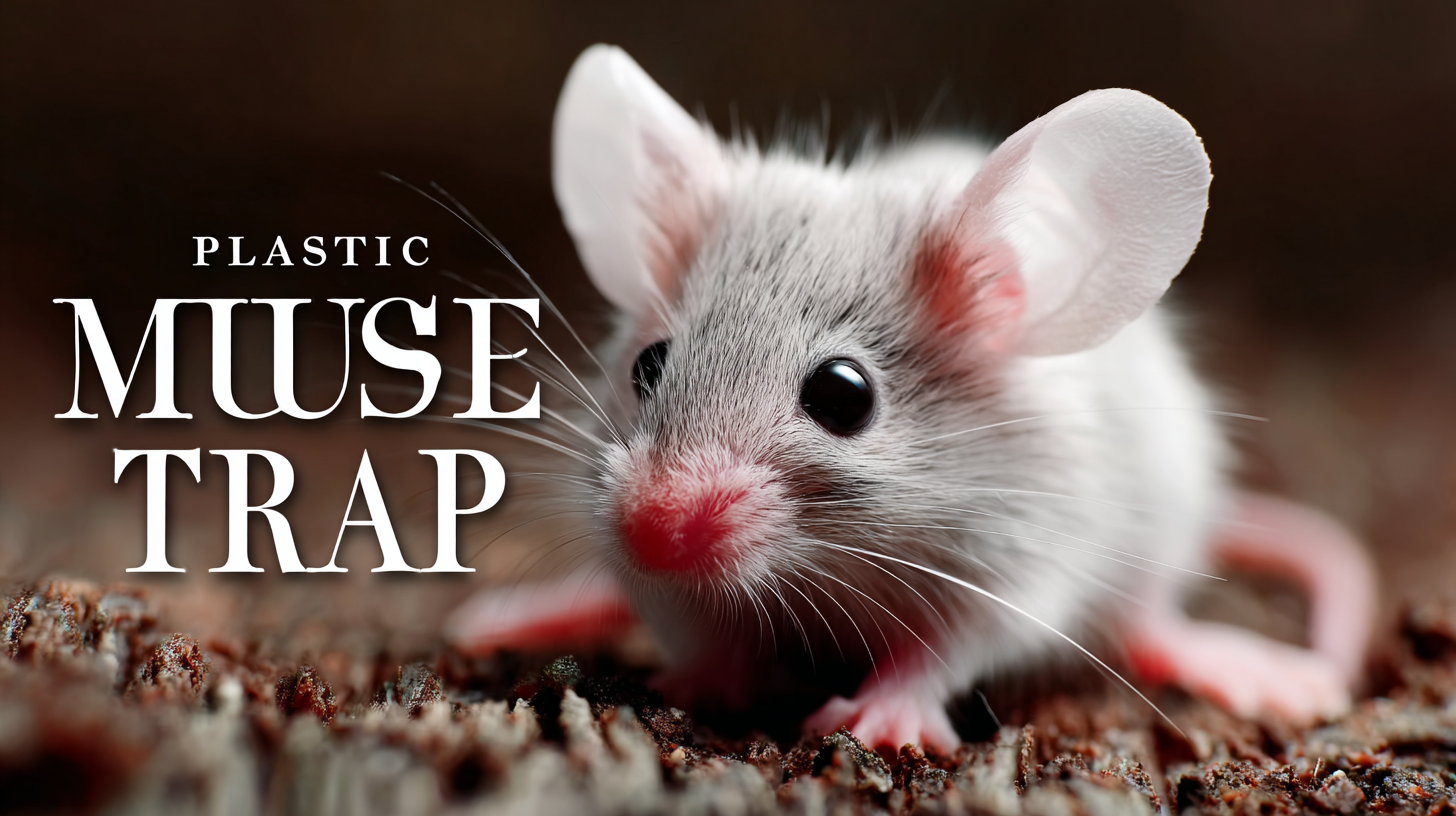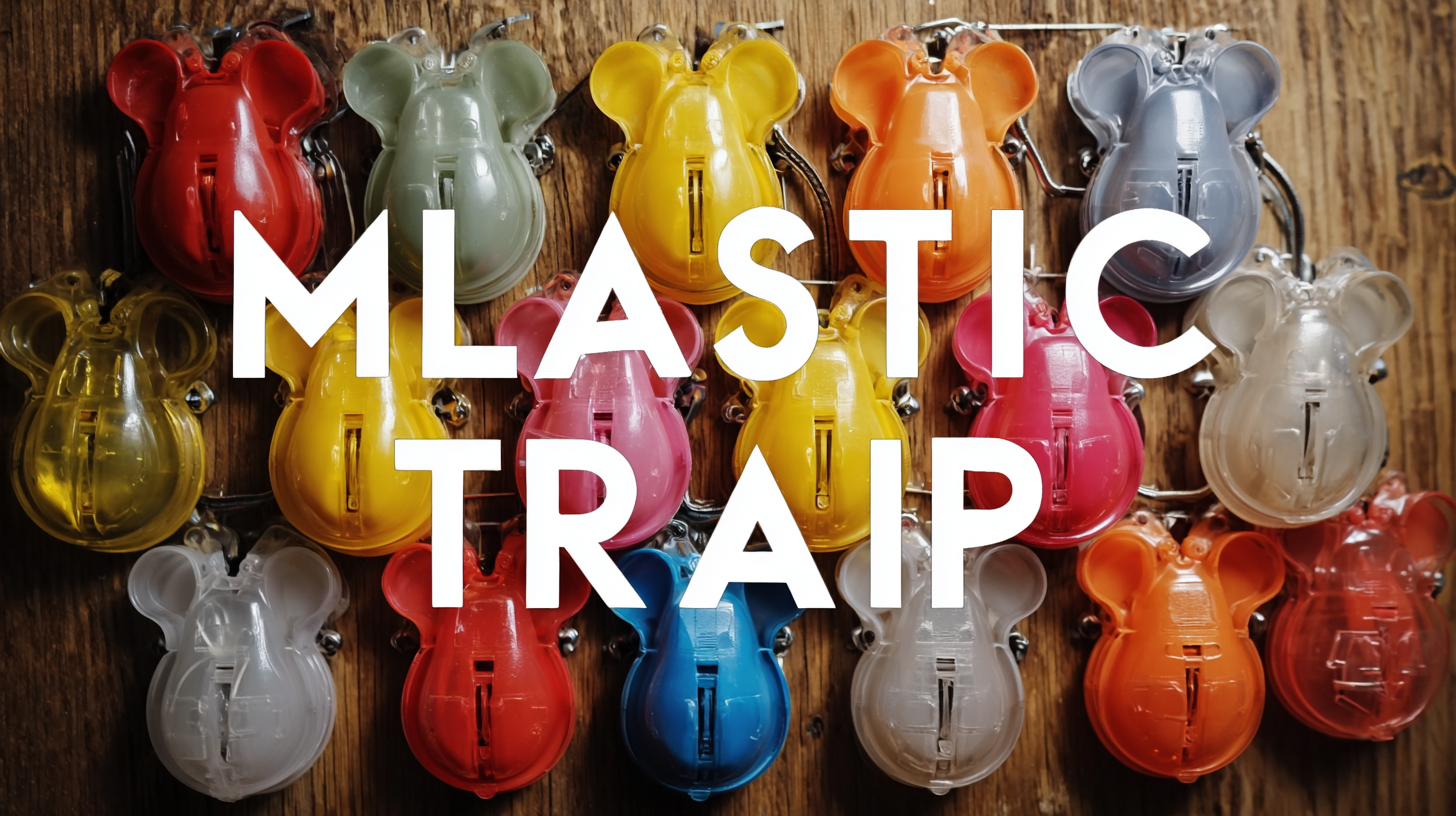
 Bird & Pigeon Pest Control
Bird & Pigeon Pest Control  Mice & Rat Pest Control
Mice & Rat Pest Control  Mole & Vole & Gopher Pest Control
Mole & Vole & Gopher Pest Control  Fly Insect Pest Control
Fly Insect Pest Control  Wasp & Bee Pest Control
Wasp & Bee Pest Control  Moth Pest Control
Moth Pest Control  Mosquito Pest Control
Mosquito Pest Control  Cockroach Pest Control
Cockroach Pest Control  Wildlife Pest Control
Wildlife Pest Control  Snake Pest Control
Snake Pest Control  Bed Bug & Flea Pest Control
Bed Bug & Flea Pest Control  Snail & Slug Pest Control
Snail & Slug Pest Control  Ant & Termites Pest Control
Ant & Termites Pest Control  Spider Pest Control
Spider Pest Control  Other Insect Pest Control
Other Insect Pest Control  Garden Products
Garden Products  Blog
Blog In the quest for effective pest management, Plastic Mouse Traps have emerged as a popular choice among global buyers, offering practical solutions for rodent control. According to a report by the Global Pest Management Industry, the demand for innovative and humane pest solutions has risen, with the plastic trap market expected to grow at a CAGR of 6.5% between 2021 and 2026. Understanding the nuances of after-sales service and maintenance costs is critical for consumers looking to invest in these products. A survey conducted by the Institute of Pest Control reveals that over 60% of users consider long-term service and maintenance support as major factors influencing their purchasing decisions. As we delve into the essential criteria for selecting the best Plastic Mouse Trap, we will uncover not only product design features but also the significance of robust customer service and cost-effective maintenance strategies that can enhance user satisfaction and effectiveness.

When it comes to dealing with a mouse infestation, a plastic mouse trap can be an effective and hygienic solution. Understanding the key features and benefits of these traps is essential for global buyers seeking the best options.
Plastic mouse traps are designed to be easy to use, often featuring a simple, bait-ready mechanism that attracts mice and triggers an instant catch. Many models include clear observation windows, allowing users to check for captures without needing to handle the trap directly, which enhances safety and comfort in pest control.
One significant advantage of plastic mouse traps is their durability. Unlike traditional wooden traps, plastic versions are resistant to moisture and can be reused multiple times with proper maintenance. They are also easier to clean, which helps maintain a hygienic environment in your home or business.
Furthermore, the variety of shapes and sizes available ensures that there’s a plastic mouse trap suitable for any setting, making them a versatile choice for anyone looking to effectively handle rodent problems. With their combination of practicality, ease of use, and sanitation, plastic mouse traps continue to be a favored solution for pest management worldwide.
When selecting plastic mouse traps, understanding industry production standards is crucial for global buyers aiming for quality and effectiveness. According to a recent report by the Global Pest Control Association, the production of mouse traps is governed by several standards, including materials safety, durability, and effectiveness rates. High-quality plastic traps should be made from safe, non-toxic materials that meet the FDA guidelines, ensuring they are not harmful to pets or the environment. Notably, traps made from polycarbonate have shown 30% higher durability compared to those made from lower-quality plastics.
Additionally, performance metrics play a vital role in evaluating plastic mouse traps. A study published in the Journal of Pest Management indicated that traps meeting industry standards boast a capture rate of over 90%, significantly outperforming generic alternatives which can fall below 60%. Buyers should also consider the ease of use and cleaning, as traps designed with user-friendly features are more likely to encourage consistent usage. By focusing on these production standards and performance metrics, buyers can ensure they choose the most effective plastic mouse traps available in the market.
When it comes to managing rodent problems, selecting the right plastic mouse trap is crucial for effective pest control. The market offers a variety of mouse traps designed to cater to different needs, ranging from traditional snap traps to more innovative electronic models. According to the Global Pest Control Market Report, the demand for plastic traps has surged by over 25% in the last five years, driven by their affordability and ease of use. Understanding the features of each type can help buyers make informed decisions.
Plastic snap traps are popular for their simplicity and quick action. They are often favored for residential use, as research indicates they can eliminate up to 95% of captured rodents effectively. On the other hand, electronic traps, which kill mice instantly using high-voltage technology, are gaining traction in commercial settings where efficiency is imperative. A recent survey indicated that nearly 60% of pest control professionals prefer electronic traps due to their humane approach and reduced risk of contamination. As global consumers look for effective solutions, evaluating these various trap types will ensure better outcomes in pest management strategies.

When selecting the best plastic mouse trap, global buyers should rely on data-driven insights to ensure effectiveness and efficiency. According to a recent report from the American Pest Control Association, approximately 14% of households in urban areas experience rodent infestations each year. This alarming statistic highlights the importance of investing in a quality mouse trap, tailored to resolve specific pest control challenges.
Tips:
- Evaluate the trap’s design; studies show that traps with sensitive triggers catch 30% more rodents than their less-sensitive counterparts.
- Consider the baiting system; research indicates that traps using peanut butter attract mice more effectively than traditional cheesy baits.
Moreover, global buyers should analyze consumer reviews and performance metrics to gauge popularity and effectiveness. A survey published in the Journal of Pest Management Science revealed that plastic traps are favored by 70% of consumers for their reusability and ease of cleaning, making them a sustainable option. By leveraging such insights, buyers can make informed decisions that cater to both immediate needs and long-term pest management strategies.

When selecting the right plastic mouse trap for your needs, it's essential to consider several factors that can significantly impact its effectiveness. First and foremost, think about the scale of your mouse problem. For minor infestations, a few compact traps may suffice, while larger issues could require a broader setup with multiple traps strategically placed around your home. Pay attention to the design of the trap as well; many modern plastic traps are designed for easy setup and disposal, which can save you time and hassle.
Next, examine the features that different traps offer. Some plastic mouse traps are designed to be reusable, while others are intended for single use. Reusable traps can be more cost-effective and environmentally friendly in the long run. Additionally, look for traps with features like bait compartments or safety mechanisms, particularly if you have pets or children. Durability is another critical factor; opt for traps made from high-quality plastic that can withstand various weather conditions if being used outdoors. By considering these aspects, you can select a plastic mouse trap that effectively meets your specific pest control needs.

